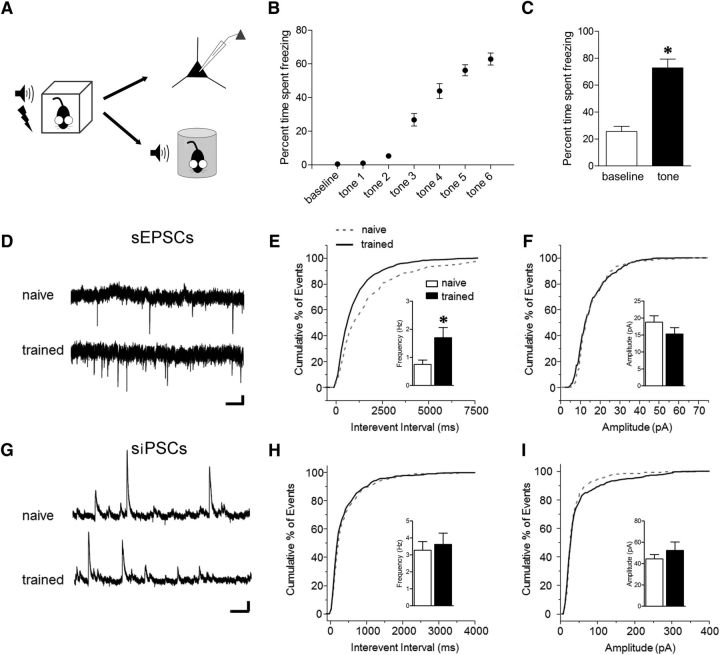Figure 2.
Limited impact of fear conditioning on spontaneous neurotransmission in the basal nucleus. A, Schedule for obtaining electrophysiological or behavioral measurements for all trained mice. Training entailed six pairings of pure-tone CS (2 kHz, 20 s, 80 dB) with scrambled footshock US (0.7 mA, 2 s), while naive mice were selected from cage-experienced littermates. B, C, Freezing during fear conditioning (B) and retrieval test (C). *p < 0.0001, paired t test versus baseline (n = 10). D, Representative sEPSC traces at −60 mV. Calibration: 10 pA × 400 ms. E, F, Cumulative distribution and group means for frequency (E) and amplitude (F) of sEPSCs, *p < 0.05, two-tailed t test [n = 12 (5) naive, 14 (4) trained]. G, Representative sIPSC traces at 0 mV. Calibration: 30 pA × 300 ms. H, I, Cumulative distribution and group means for frequency (H) and amplitude (I) of sIPSCs [n = 9 (3) naive, 11 (3) trained].

